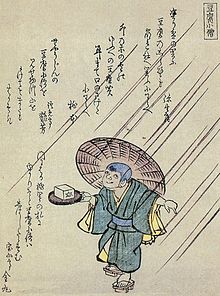
Are there nights when you cried for no reason? No memories of sorrow. No feelings of grief. No stench of oninons. And yet you wailed puddles of tears all through the night. Certainly, this is the works of a yokai. One that makes others weep and cry. Undoubtedly, the yokai is yonaki-babā. She is the contagious crying carrier.

When you first meet yonaki-babā, you will think nothing of it. Because you see only a typical old woman weeping. Her hair is unruly and unkempt. She sits by the street wailing her heart out. The old woman cries out loud in front of a house, late at night.
But if you listen carefully, you hear the people in the house, also wailing. Furthermore, they do not know why they are crying out loud. These are the signs that you are in the presence of yonaki-babā. The yokai that makes everyone cry.
Repeat Offender
Typically, yonaki-babā are harmless. She usually cries for night and then moves away. Never to be seen again, ever. But there are tales of yonaki-babā returning night after night. As such, the whole household continues to be sad for weeks on end. This cause a lot of confusion and the inhabitants may become very depressed. Thus, eventually real sorrow enters the household. Which in turn affects their daily life and routine, forcing the family into ruins.
In fact, Koichi Yumoto (湯本豪一) groups yonaki-babā under a class of yokai that spreads misfortune. A malevolent group known as yakubyō gami (疫病神). Therefore, yonaki-babā is not only a contagious crying carrier. But she can also brings misfortune and ruin to households all around Japan.
Conclusion
So, when you are walking home late at night, be aware. Be careful of the lamenting old woman by the street. Especially one that is crying just outside your apartment. If you do see yonaki-babā near your place, better to stay away. Knowing why you cry is certainly better than crying for no reason.
Yokai Details
- name: yonaki-babā ( yoh-nah-key-bah-baa )
- kanji: 夜泣き婆 (よなきばばあ)
- meaning: weeping hag of the night
- abilities:
- crying inducement — able to make others weep or cry






